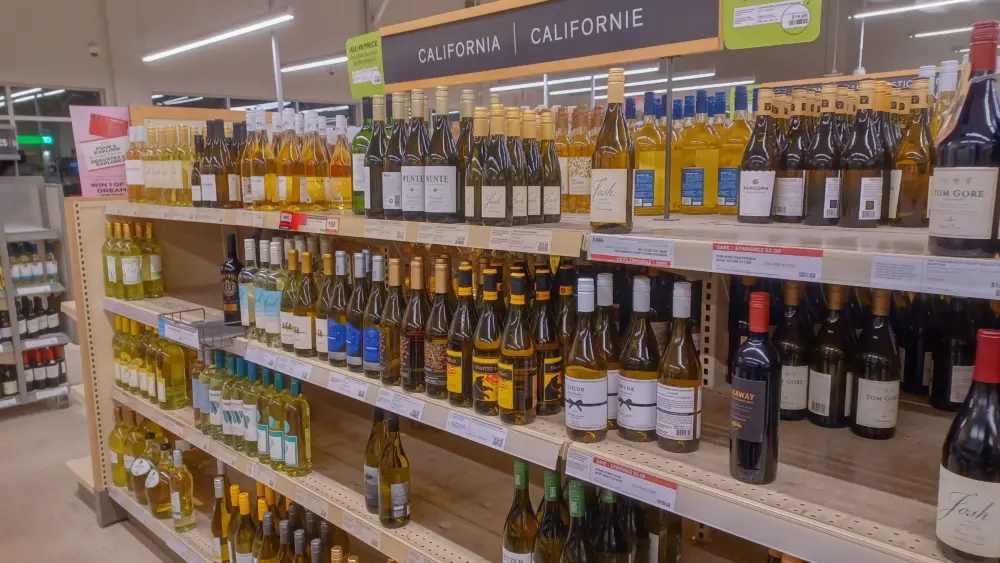
For the last decade or more, Northern California grape growers have largely experienced high demand, but this is changing. Falling demand, coupled with smoke-taint damage from local wildfires has left many vineyard owners asking a previously unimaginable question: Should I leave my unsold grapes on the vine to rot? Or, drop the clusters on the ground to decay there instead?
The question to drop or not to drop isn’t as trivial as it might sound. On the one hand, it makes economic sense not to spend additional resources removing unused clusters after already having spent a year’s worth of resources (money and time) to farm the unsold crop. However, there has historically been reluctance to keep decomposing clusters dangling along the leafless vines. They often become covered in thick coats of slimy molds, fuzzy fungi and swarms of sugar-hungry yellow jackets that make the scene look more like a backdrop for a scary movie than a pristine vineyard. Beyond the esthetics, many have believed that the unsightly grape clusters attracted a host of potentially harmful elements to the long-term health of the vines, such as rodents, virus-carrying insects and pathogens. The idea was that dropping the fruit onto the ground before it rotted was the better option because the underlying soils and plants helped mediate and moderate the harmful effects of the decomposing berries.
For years I went along with the conventional wisdom and may have even come up with some intricate rationale to justify the extra cost of dropping unsold fruit. It’s hard to remember the exact logic of those distant events because it only happened once (or maybe twice, okay, three times at the most). My own contrition aside, like most things, listening to trusted experts can go a long way to helping clarify and inform.
Last year, two pre-eminent University of California viticultural experts—Rhonda Smith and agriculture ombudsman Karen Giovannini—helped clarify the conundrum in an article for the October 2019 issue of the UC Agriculture and Natural Resources, a scientific journal. “All common grapevine fungal pathogens exist inside vineyards and the relative importance of allowing unsold fruit to remain on the vines should be put into perspective of other vine tissues that are also decomposing,” they wrote.
They explained that most of the negative vineyard fungal pathogens—Botrytis cinerea, Cladosporium and Aspergillus species, which are associated with Botrytis bunch rot, Cladosporium rot and sour rot, respectively—are often present as spores that can inoculate healthy future grapes within vineyards with or without rows of rotting clusters. “From the perspective of a plant pathologist, clusters that decompose over the winter—either on the vine or on the ground—are not likely to have a noticeable effect on fungal disease pressure the following year given common vineyard floor management practices,” they wrote.
Beyond disease management, vineyard floor management practices have grown in importance over the years. When I was growing up, the “best” vineyards had rows of neatly trimmed vines, the earth tilled powdery each year. The “worst” vineyards were often untilled, weedy messes with sprawling, unkempt vines that made shady canopy covers for grapes, rabbits and children looking for a lacy-roofed fort at the peak of the summer’s heat. Today, that has changed with some of the finest vineyards loosening the reins on what had evolved in some vineyards to an almost compulsive approach to the point of creating sterile environments devoid of anything but sunbaked dust and monocrops of vines. Yes, such vineyards often produced highly-regarded, consistently tasting wines, but such vineyards were also often overly susceptible to changing conditions—drought, frost, disease—in what amounted to, “Corruptio optimi pessima” (the corruption of the best is the worst of all).
Even so, as our experts remind us, the best vineyard floor management of today probably includes a lot of what my great-great-grandfather might have told his Northern California grape-farming compatriots some 100-plus years ago: To ensure healthy and vibrant future harvests, it’s important to eliminate any of the previous year’s debris and decomposing clusters before next year’s bud break, while maintaining healthy soils through natural amendments, flourishing native vegetation and/or sown cover crops in any non-tilled rows.
Author
-

Tim Carl lives, writes and teaches in Calistoga. He grew up in St. Helena and traces his Calistoga grape-growing roots back five generations. You can reach him at tcarl@northbaybiz.com.
View all posts



